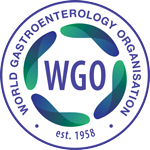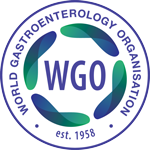EUS-guided therapy improves outcomes of endoscopic gastric varix treatment
Review by Prof. Mark Topazian (USA)
Study Summary
Gastric fundic varices are associated with high rebleeding and mortality rates. Endoscopic cyanoacrylate (CYA) injection is widely practiced around the world for treatment of fundic varices, but is associated with significant rebleeding rates and risk of glue embolization. In recent years, EUS-guided coil placement (Coil) into gastric varices has emerged as an additional therapeutic option, often combined with CYA injection. There are little randomized, prospective data to guide practice recommendations in this area.
In this randomized, prospective, single-blinded study conducted at an Indian referral hospital, 50 patients with gastric fundic varices were randomly assigned to CYA versus Coil+CYA. Most patients had a history of prior hemorrhage or were actively bleeding, although 29% of the Coil+CYA group and 15% of the CYA group had not bled, but were treated because of the size of their varices and the perceived risk of hemorrhage. In the Coil+CYA group, coils were introduced into varices under EUS guidance, followed by CYA injection via the same EUS needle until color Doppler confirmed absence of flow. In the CYA group, glue injection was performed via a gastroscope, “aiming for complete visual obliteration of blood flow in the varix.”
Technical success was 100% in both study arms. Patients in the Coil+CYA group received lower volumes of CYA (1.5 cc vs. 3.5 cc), were less likely to require reintervention (21% vs. 54%), had a longer mean time to reintervention (44 weeks vs. 25 weeks), and longer mean survival (48 vs. 42 weeks). These differences were all statistically significant. Adverse event rates were similar in the two groups (13% vs. 19%), and no major adverse events occurred. The authors conclude that EUS-guided Coil+CYA is superior to gastroscopic CYA, with reduced need for reintervention and improved survival.
Commentary
This randomized, controlled trial adds to the increasing body of evidence suggesting that EUS-guided gastric fundic varix treatment is superior to endoscopic cyanoacrylate injection alone. Of note in this study, EUS guided dual modality therapy achieved cessation of varix blood flow while using much lower volumes of CYA than endoscopic CYA. Limitations of this study include its single-center, single-endoscopist design, the higher rate of primary prophylaxis in the Coil+CYA group, and limited statistical power.
There are a growing number of options for nonsurgical treatment of fundic varices that have bled. Another recent randomized controlled trial, also in press, demonstrated improved outcomes with combined endoscopic and interventional radiology approaches compared to endoscopic CYA injection alone. “Intensive variceal band ligation,” reported from China, is another intriguing option for which further data is needed. A multidisciplinary approach to patients with bleeding fundic varices is ideal, guided by the patient’s venous anatomy and with consideration of EUS-guided or interventional radiology-guided interventions, when these are available. We still lack prospective, randomized data demonstrating benefit from any of these interventions for primary prophylaxis of fundic varices.
Citation
Jhajahria A, Yadav S, Singh S, et al. Endoscopic ultrasonography-guided coil embolization and cyanoacrylate injection versus cyanoacrylate injection alone for gastric varices: a randomized comparative study. Endoscopy 2024: Sep 18, online ahead of print, doi: 10.1055/a-2408-6905, https://pubmed.ncbi.nlm.nih.gov/39293480/
View past News You Can Use commentaries

